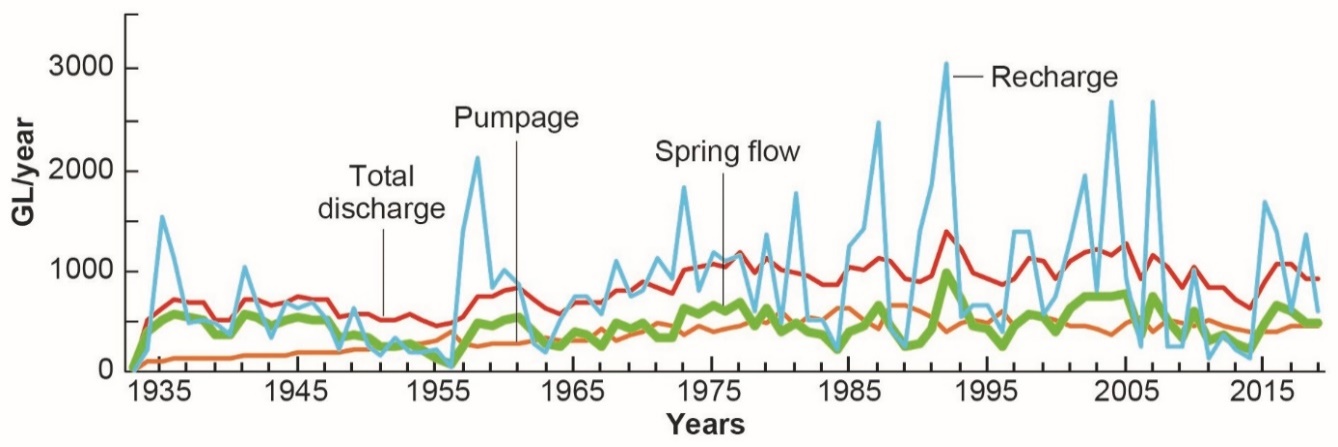7.1 Sustainability
The Edwards Aquifer water quality has remained suitable even with increased pumpage and the effects of urbanization, agriculture, and industry. This is because most of the agricultural irrigation is over the confined zone, which supports better soils, and because intense recharge events dilute and disperse local contamination sources and events. In terms of water quantity, the aquifer has remained stable since 1934, based on data from the San Antonio segment (Figure 34). These data show there are times of low recharge and low spring flows, but periods of high recharge essentially refill the aquifer. Estimates of total recharge from 1934 to 2019 approximately equal the estimated total discharge. Pumpage has remained relatively stable since the 1960s despite population growth because of conservation, use of other water resources, and drought-triggered withdrawal reductions specified by the EAA and the BSEACD (Table 5 and Table 6). This demonstrates that management policies now being implemented have achieved a good deal of success.

Figure 34 – Recharge and discharge by wells and springs for the San Antonio and Kinney segments, 1934 to 2019 (Edwards Aquifer Authority 2019a,b). Red is total discharge, orange is pumpage, green is spring flow, blue is total recharge.
The Edwards Aquifer is sustainable in the long term, but pumping will have to be reduced during periods of low recharge and spring flow, and severe consequences could develop for water-supply wells and endangered species during extended periods of extreme drought. Different areas are addressing sustainability with different approaches and differing degrees of success. The BSEACD, for example, is advocating sustainable management of the Barton Springs segment of the Edwards Aquifer. However, the paradox of the karstic Barton Springs segment is that rapid recharge allows this segment of the aquifer to be sustainable in the long-term, but the aquifer is vulnerable and has limited groundwater availability during drought periods (Hunt et al., 2019).
